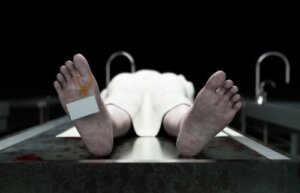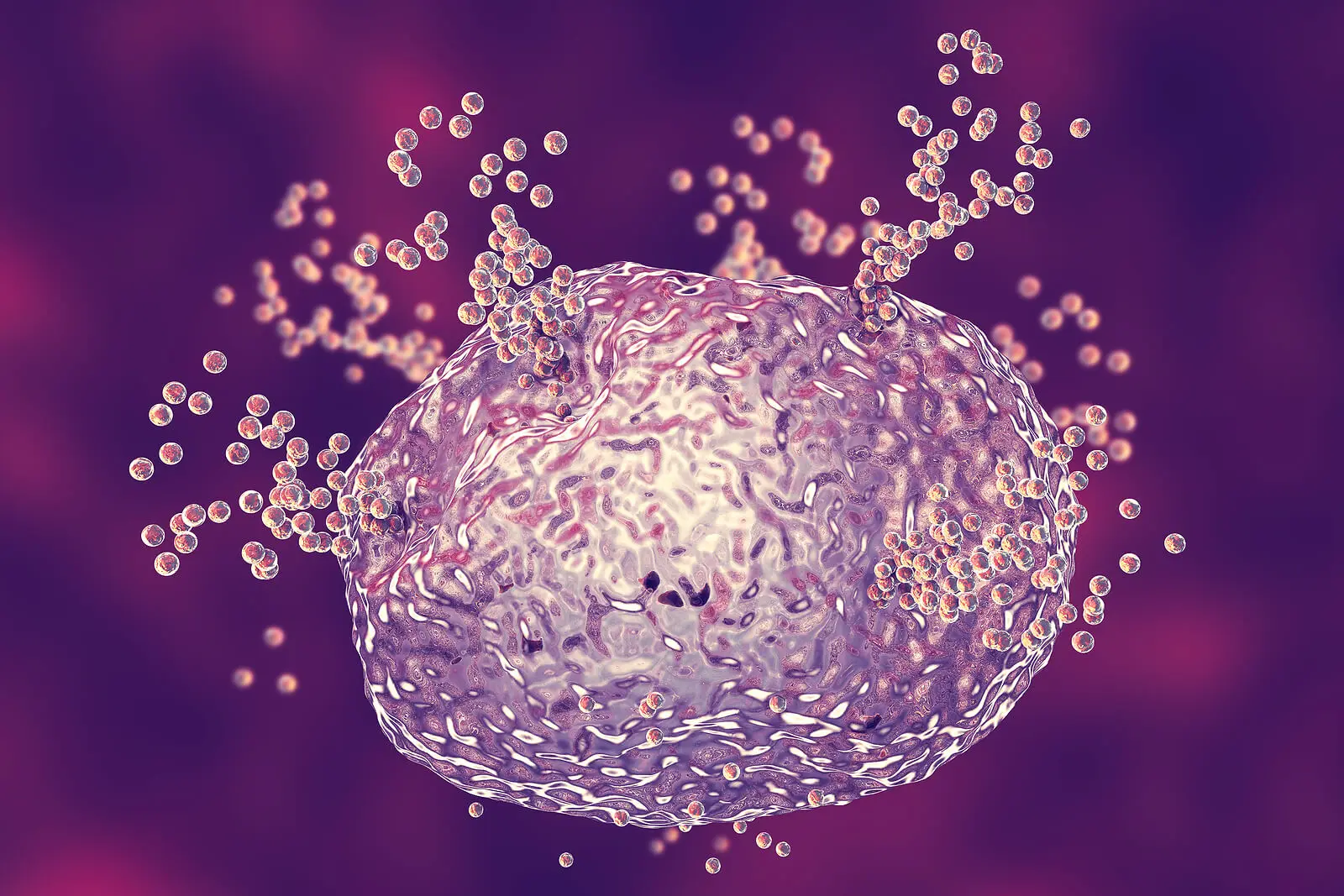What Happens in the Body After Death?


Reviewed and approved by the nurse Leidy Mora Molina
Death is an uncomfortable and sensitive subject for most people. Generally, there’s a latent concern about the different stages that the body goes through after we die. In this sense, some people wonder what physically happens in the body hours after death.
The irreversible cessation of vital functions that allow life is a dynamic phenomenon influenced by several factors. Studies affirm that after death a series of structural, physical, and chemical changes known as cadaveric phenomena are triggered in the body.
Thus, the dying process occurs in several phases. Each of these physical modifications occurs over a certain period of time and is useful for forensic and legal medicine.
The state of death
Most people think of the state of death as the absence of a pulse and cessation of breathing. However, the death of the body is a complex process that extends beyond circulatory and pulmonary collapse, which in some cases may even be reversible by resuscitation.
Currently, electrocardiographic studies of deceased patients suggest that the human brain continues to function for up to 10 minutes after death. In this sense, the body may remain, in some way, aware of impending death.
Thus, healthcare professionals use a variety of criteria to declare a person dead. These include a lack of response to reflexes and absence of pupillary contraction to light, as well as the irreversible cessation of pulse and respiration.
What are the modifications that the body undergoes after death?
At the moment life is extinguished, the human body undergoes several modifications resulting from the biochemical processes of the corpse and exposure to the surrounding environment. In this sense, it’s possible to classify these physical alterations into early and late changes.

We think you may be interested in reading this, too: What Does It Mean to Dream of Death?
Early changes
Early changes are those that occur in the body 24 hours after death. These include the following.
Lividity
As the heart stops pumping blood, the skin tends to become pale within the first few minutes of death. Then, the blood will begin to be distributed by gravity to the parts of the body closest to the ground, forming the lividities or livor mortis. These are nothing more than purplish spots in the declining areas.
These lesions are usually very useful in determining the position of the body at death. They can be modified by moving the body within the first 12 hours. After 24 hours of death, no new ones will form.
Cooling
A characteristic sign of death is the loss of body temperature or algor mortis. This cadaveric cooling occurs in the first 24 hours after death, until the corpse acquires the temperature of the surrounding air.
At death, heat loss occurs at a rate of 1 degree Celsius per hour, depending on atmospheric conditions. Chilling is usually most evident early on the face and hands, and later on the neck and armpits. Overweight people tend to cool more slowly.
Stiffness
In the first hour after death, all the smooth and striated musculature of the body begins to relax in a phase known as primary flaccidity. As a result, the joints of the body become flexible, the eyelids lose their tone and the jaw tends to open.
Later, a state of stiffening and petrifaction of the muscles known as rigor mortis will set in. This begins in the smaller muscles of the face and descends to the rest of the body, promoting discrete retraction of the body. It reaches its maximum intensity between 12 and 15 hours after death.
Dehydration
This phenomenon results from the continuous and passive exposure of body fluids to the environment. Dehydration is usually manifested by parchmenting of the skin, drying of the mucous membranes and genitalia, and sinking of the eyeballs.
Similarly, an accentuation of bony prominences in the chest, thorax, and hips is common. In addition, abrupt and generalized weight loss is seen in young children.
Late changes
Late changes in the body occur after the first 24 to 36 hours after death. They are due to the natural evolution of the corpse and involve the progressive destruction of organs and tissues. In this sense, we can find the following phenomena.
Autolysis or autodigestion
Autodigestion begins when the heart stops beating and the tissues are deprived of oxygen. However, physical changes begin to become evident several hours later. Research affirms that this stage is the result of the action of the body’s own enzymes on cell membranes.
Similarly, the phenomenon usually begins with greater intensity in the liver, kidneys, adrenal glands, and stomach. In addition, the brain is prone to autolysis due to its high water content.

Like this article? You may also like to read: How to Prevent Sudden Death in Sport
Putrefaction
The cadaveric ecosystem consists of bacteria living in and on the body’s surface. The intestinal microbiota, especially that of the cecum, is the main source of germs in the human body. However, while the person is alive, most organs are devoid of microbes.
In this sense, shortly after death the immune system is shut down and bacteria can spread freely to all tissues. This fact conditions the onset of putrefaction as a result of the fermentative action of bacterial enzymes on the cells.
In the first 24 to 48 hours, greenish and blackish stains appear around the abdomen due to the action of anaerobic bacteria on the blood vessels. Later, the gas produced by the microbial action causes distension of the abdomen, protrusion of the eyes, and protrusion of the tongue.
This gives way to the final phase of decomposition known as liquefaction. In this phase, the tissues are destroyed and expelled in the form of a brown, putrefying liquid. Similarly, the body progressively decreases in volume and is then destroyed by the action of insects and other animals.
A complex process that begins with the cessation of vital functions
Death is a complex state that starts with the irreversible collapse of vital functions and the cessation of brain capacities. After death, the human body undergoes a series of physical and biochemical changes and modifications that lead to the decomposition of all organs and tissues.
In general, these alterations occur continuously in all cadavers and are influenced by the cause of death and environmental variations. Likewise, they are the main object of study of forensic and legal medicine.
All cited sources were thoroughly reviewed by our team to ensure their quality, reliability, currency, and validity. The bibliography of this article was considered reliable and of academic or scientific accuracy.
- Peña A, Bustos R, Verdín O. FENOMENOS CADÁVÉRICOS Y EL TANATOCRONODIAGNÓSTICO. Gac. int. cienc. forense. México. 2019; 31: 10-37.
- Norton L, Gibson R, Gofton T, Benson C, et al. Electroencephalographic Recordings During Withdrawal of Life-Sustaining Therapy Until 30 Minutes After Declaration of Death. Canadian Journal of Neurological Sciences / Journal Canadien des Sciences Neurologiques. 2016;44(2):139-145.
- Molano M, Mejía M, Ardila C. PARTICIPACIÓN DEL ODONTÓLOGO EN LA DETERMINACIÓN DEL DIAGNÓSTICO DE LA CAUSA DE MUERTE Y DEL INTERVALO POST – MORTEM. Med. Leg. Costa Rica. 2009; 26 (1): 23-31.
- Pachar Lucio José Vicente. Cambios postmortem y data de la muerte en ambientes tropicales. Med. leg. Costa Rica. 2013 ; 30( 2 ): 51-57.
- Romero J. Muertes por sumersión: Revisión y actualización de un tema clásico de la medicina forense. Cuad. med. forense. 2007;(48-49 ): 99-130.
- De las Mercedes L. Importancia de la criminalística en el manejo de cadáveres en las labores de protección civil en México. Rev. Crim. Colombia. 2013; 55 (3): 337-350.
This text is provided for informational purposes only and does not replace consultation with a professional. If in doubt, consult your specialist.








